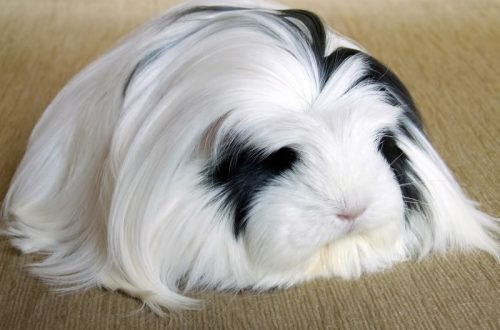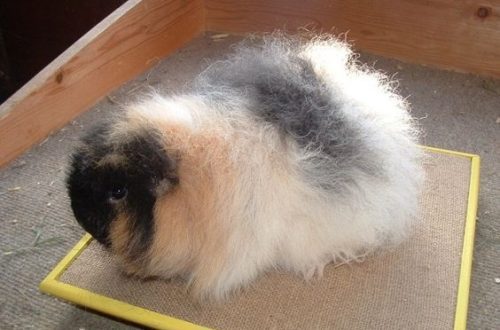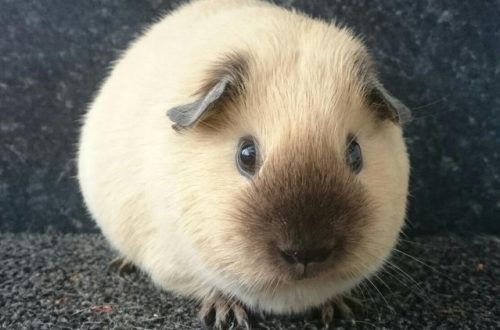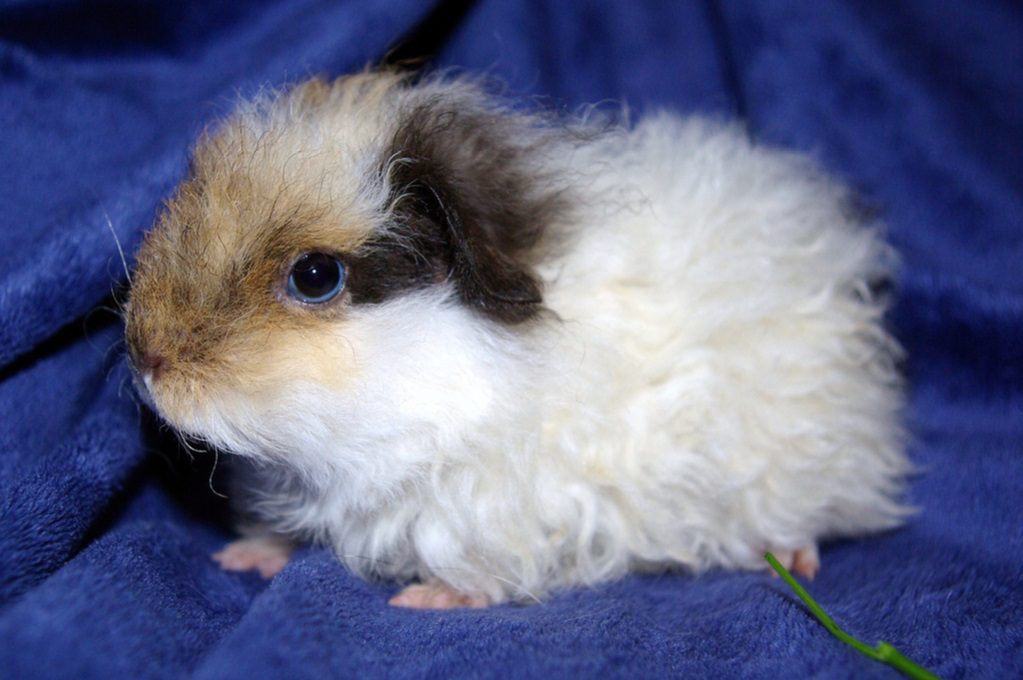
Merino guinea pig
Merino (Merino Guinea Pig) is a very beautiful, even majestic breed with long curly hair and a rosette crown on its head. Outwardly, merino pigs are very similar to texels and coronets. They have long wavy hair in common with texels, and a rosette-crown on the head with coronets.
Merino is a rare breed, in Russia you can find such pigs only in nurseries, but in a number of European countries, merino are quite popular as pets, firstly, due to their amazing appearance, and secondly, because of their wonderful character and excellent temperament .
Merino (Merino Guinea Pig) is a very beautiful, even majestic breed with long curly hair and a rosette crown on its head. Outwardly, merino pigs are very similar to texels and coronets. They have long wavy hair in common with texels, and a rosette-crown on the head with coronets.
Merino is a rare breed, in Russia you can find such pigs only in nurseries, but in a number of European countries, merino are quite popular as pets, firstly, due to their amazing appearance, and secondly, because of their wonderful character and excellent temperament .

Contents
From the history of merino
Merino is a so-called cross-breed, which appeared as a result of crossing the Texel and Coronet breeds. This breed first appeared in the UK, and to this day it is in England that active work continues to improve the breed, and it is England that is the main habitat of these pigs. There, this breed is quite popular, which cannot be said about other countries.
Merino is not yet included in the list of officially recognized guinea pig breeds, and the standard for this breed has not yet been developed.
Merino is a so-called cross-breed, which appeared as a result of crossing the Texel and Coronet breeds. This breed first appeared in the UK, and to this day it is in England that active work continues to improve the breed, and it is England that is the main habitat of these pigs. There, this breed is quite popular, which cannot be said about other countries.
Merino is not yet included in the list of officially recognized guinea pig breeds, and the standard for this breed has not yet been developed.
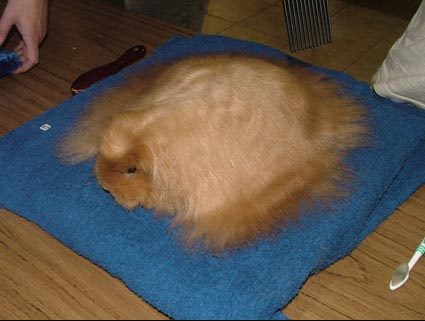
The main features of merino guinea pigs
Merino is a long-haired breed, with curly long hair and a rosette on the head between the ears. On the head, the hair is short, allowing you to see a pretty muzzle of a pig and beady eyes. Merino wool is quite soft and light.
Merino has a short and wide head, a characteristic “Roman” nose.
Merino can be any color. Various color combinations are allowed.
The average weight is about 1 kg. Males are usually heavier than females.
The average lifespan is 5-6 years, which is shorter than some other guinea pig breeds. For example, American pigs live 8-10 years.
Guinea pigs of this breed are not usually recommended as the first guinea pig, as they require increased attention during care.
Merino is a long-haired breed, with curly long hair and a rosette on the head between the ears. On the head, the hair is short, allowing you to see a pretty muzzle of a pig and beady eyes. Merino wool is quite soft and light.
Merino has a short and wide head, a characteristic “Roman” nose.
Merino can be any color. Various color combinations are allowed.
The average weight is about 1 kg. Males are usually heavier than females.
The average lifespan is 5-6 years, which is shorter than some other guinea pig breeds. For example, American pigs live 8-10 years.
Guinea pigs of this breed are not usually recommended as the first guinea pig, as they require increased attention during care.
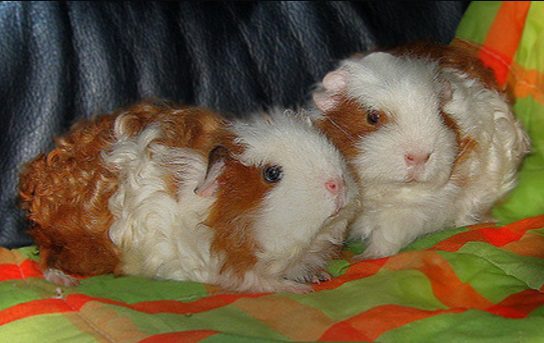
Merino Guinea Pig Care
Like other guinea pigs, merinos are not demanding in terms of care. For a long and happy life, they need very little – a spacious large cage, the right diet, 3 meals a day and your love and care, of course.
The cage for guinea pigs should be really spacious, with good ventilation. Guinea pigs spend most of their lives in a cage, and since they are quite active animals, they need a place where they can walk, run, jump and engage in other physical activities. Otherwise, the pig may face obesity and other health problems. The recommended cage area is 0,6 square meters, which corresponds to a cage size of 100×60 cm.
Merino are the same absolute vegetarians as other guinea pigs. A variety of vegetables, fruits, fresh grass and/or hay, kibble (dry food) and clean water at all times are all your guinea pig should have in their diet.
Hair care for merino pigs
So, merino, like other representatives of long-haired breeds, require increased attention to their luxurious fur coat.
There are two ways: to cut or not to cut the hair of a merino pig. The first option is suitable for those breeders who keep a merino as a pet. In this case, regular trimming to a comfortable length will make life easier for both you and your guinea pig.
If you and your pig are participating or planning to participate in exhibitions and demonstrate a chic long fur coat, then you will have to figure out how to protect it from debris. Usually breeders use special hairpins for this, twisting long curls in them.
The coat of guinea pigs grows constantly, on average by 2-2,5 cm per month, so if you decide not to cut your pet, then you will need to ensure that the pig stays comfortable in the cage. Long hair must be pulled up, otherwise, dragging on the floor, they will collect garbage, hay and excrement. In addition, the structure of merino wool is such that it absorbs urine very well, so the hair around the anus must be trimmed regularly.
You can use regular scissors or hairdressing scissors to cut hair, but the most effective way is with electric scissors.
You can buy a special brush at the pet store to clean the fur, but a toothbrush is also fine.
Another tip is to run your fingers through the pig’s fur from time to time to find tangles and untangle them. Many pigs are very fond of this procedure.
As for bathing, experts generally do not recommend bathing guinea pigs, but an exception is made for long-haired breeds. For a merino, bathing once a month will be sufficient. If you need to use shampoo, then choose only specialized products in the pet store. Don’t wash your pig with your shampoo!
Like other guinea pigs, merinos are not demanding in terms of care. For a long and happy life, they need very little – a spacious large cage, the right diet, 3 meals a day and your love and care, of course.
The cage for guinea pigs should be really spacious, with good ventilation. Guinea pigs spend most of their lives in a cage, and since they are quite active animals, they need a place where they can walk, run, jump and engage in other physical activities. Otherwise, the pig may face obesity and other health problems. The recommended cage area is 0,6 square meters, which corresponds to a cage size of 100×60 cm.
Merino are the same absolute vegetarians as other guinea pigs. A variety of vegetables, fruits, fresh grass and/or hay, kibble (dry food) and clean water at all times are all your guinea pig should have in their diet.
Hair care for merino pigs
So, merino, like other representatives of long-haired breeds, require increased attention to their luxurious fur coat.
There are two ways: to cut or not to cut the hair of a merino pig. The first option is suitable for those breeders who keep a merino as a pet. In this case, regular trimming to a comfortable length will make life easier for both you and your guinea pig.
If you and your pig are participating or planning to participate in exhibitions and demonstrate a chic long fur coat, then you will have to figure out how to protect it from debris. Usually breeders use special hairpins for this, twisting long curls in them.
The coat of guinea pigs grows constantly, on average by 2-2,5 cm per month, so if you decide not to cut your pet, then you will need to ensure that the pig stays comfortable in the cage. Long hair must be pulled up, otherwise, dragging on the floor, they will collect garbage, hay and excrement. In addition, the structure of merino wool is such that it absorbs urine very well, so the hair around the anus must be trimmed regularly.
You can use regular scissors or hairdressing scissors to cut hair, but the most effective way is with electric scissors.
You can buy a special brush at the pet store to clean the fur, but a toothbrush is also fine.
Another tip is to run your fingers through the pig’s fur from time to time to find tangles and untangle them. Many pigs are very fond of this procedure.
As for bathing, experts generally do not recommend bathing guinea pigs, but an exception is made for long-haired breeds. For a merino, bathing once a month will be sufficient. If you need to use shampoo, then choose only specialized products in the pet store. Don’t wash your pig with your shampoo!
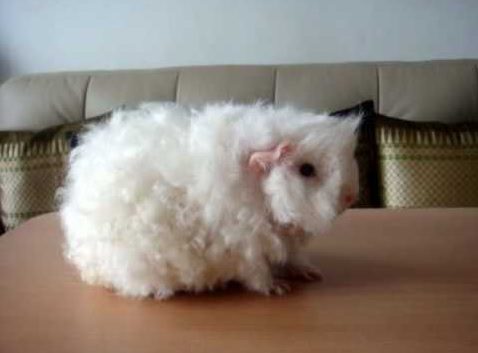
The nature of merino guinea pigs
Many breeders and merino lovers unanimously claim that these pigs have a wonderful character. They are very friendly, obedient, they have a calm temperament, they love people.
In addition, Merinos are very smart guinea pigs, they really have one of the highest IQs in the guinea pig world. They are more trainable than other breeds. In addition, they need to explore the world around them and they will be very happy with any additional toys and entertainment in the cage.
Many breeders and merino lovers unanimously claim that these pigs have a wonderful character. They are very friendly, obedient, they have a calm temperament, they love people.
In addition, Merinos are very smart guinea pigs, they really have one of the highest IQs in the guinea pig world. They are more trainable than other breeds. In addition, they need to explore the world around them and they will be very happy with any additional toys and entertainment in the cage.



